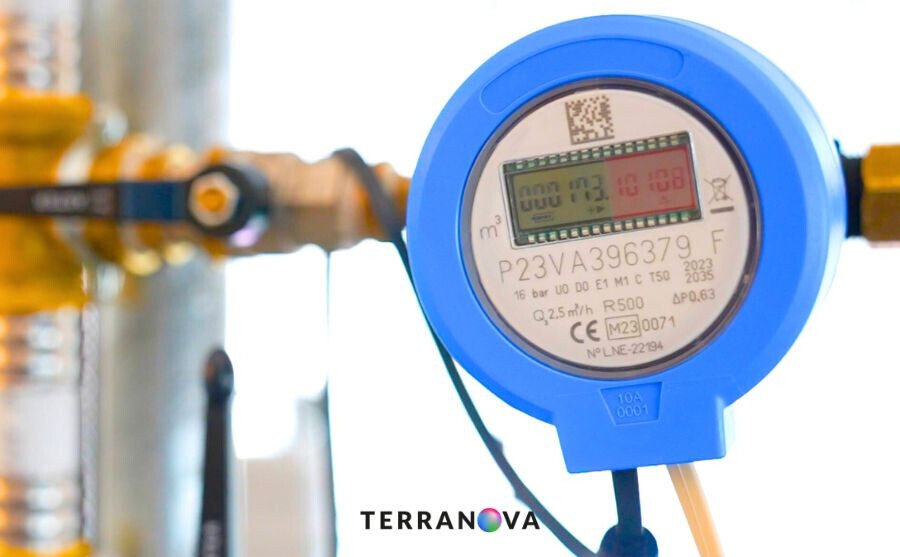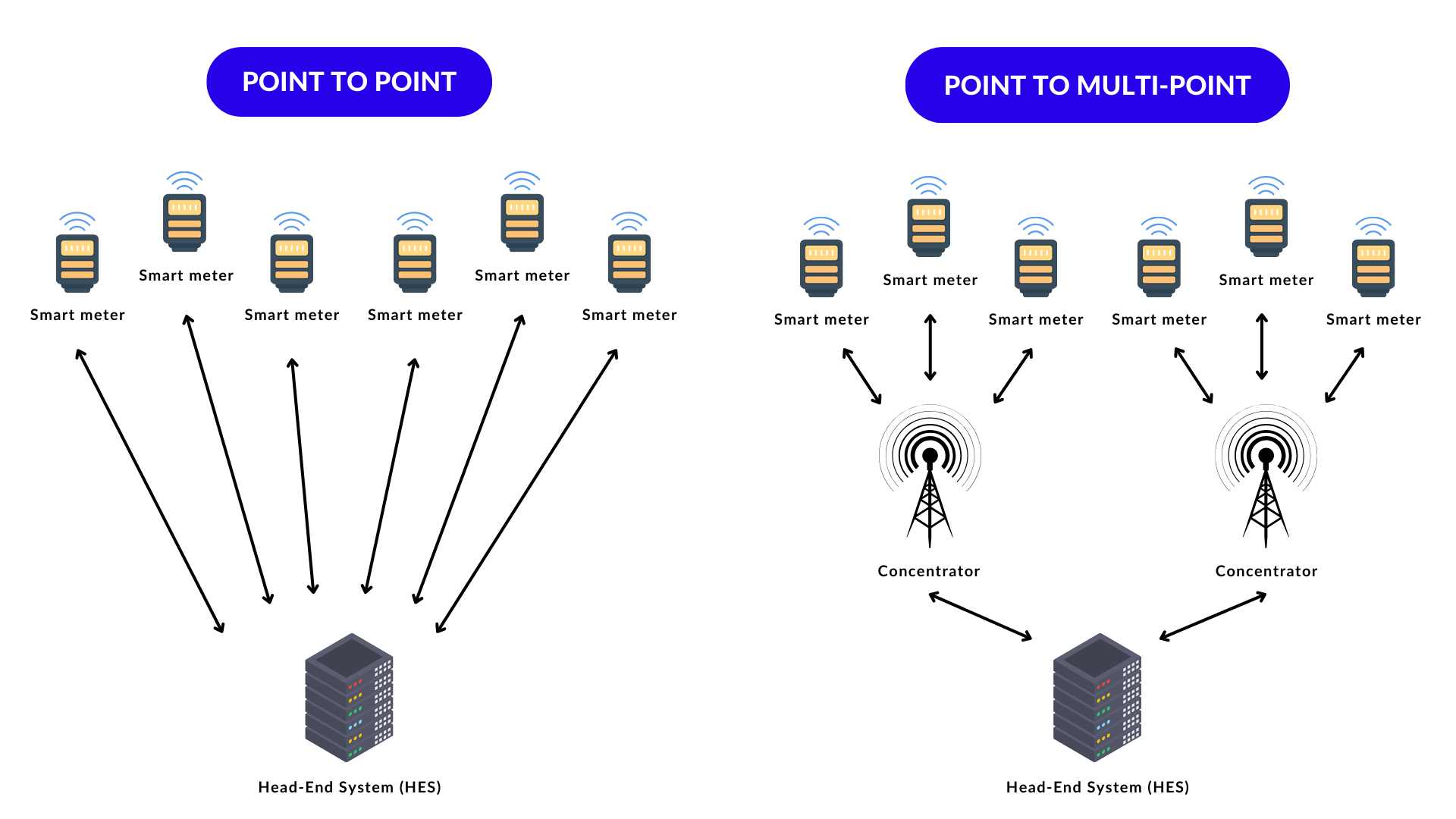

9/29/2025



NB-IoT, LoRaWAN, GSM/GPRS, RadioFrequency and Power Line Communication are the main technologies behind the smart meters built by the market's leading providers. What are their benefits? What are their disadvantages? Which technology is most useful to adopt? And how can several technologies be managed simultaneously in the same area?
The topic of communication technologies underlying the operation of smart meters is as important as it is little discussed. Smart meters, in fact, can be classified in different ways, depending on the criteria one chooses to do so. For example, when considering the scope of measurement, one can distinguish gas, electricity or water meters. One of the main characteristics by which they are classified, however, is precisely the technology with which they communicate. In this in-depth study, we will try to learn more about what they are and how they work.
The Communication Technologies
Depending on the mode of communication established between the meters and the Head-End System (HES), it is possible to divide the meters into two large families:

Another very common classification for meters is on the medium that supports the communication of the data packets exchanged between meter and HES. Four types are known:
The last one operates on frequencies dedicated to mobile communications and based on mobile (cellular) network architectures. They use a frequency spectrum managed by telephone operators, as evidenced by the presence of a SIM card inside the smart meters. The transport and network layers, on TCP/IP protocols, deal directly with the connection between two devices via the network itself: thanks to the IP address and the Internet Protocol, the data packet is sent to the correct recipient. The TCP protocol, on the other hand, has the task of establishing a connection between the parties involved (the meter and the HES, for example) and preserving it so that data can be transferred. With regard to this last communication system, we also speak of Wireless licensed technologies: the wireless frequency bands on which the technologies communicate are assigned by the state to contractors, for their management, through public tenders. The exclusivity for use, after the tenders, is generally the prerogative of the telephone operators. Since smart metering technologies are based on the cellular network operated by telephone operators, we speak of licensed wireless technologies, since they are licensed frequencies.
Wireless licensed technologies: the gas sector
Depending on the distribution service, different technologies are used. In gas, the most widely used to date are RadioFrequency 169/868 MHz and GSM/GPRS. Typically, the first one is common in domestic meters, while the second one is used for medium or large meters.
RadioFrequency communication, which falls under point-to-multipoint, involves the meter sending data to another device before the Head-End System, the concentrator. The RadioFrequency communication network, in fact, is based on the mechanism whereby concentrators collect data from a number of meters within a specific range (up to about 1 km in a dense urban environment) and then send it to the concentrator via radio waves. Subsequently, the concentrator sends the data to the HES via GPRS communication. Similarly, following the reverse direction, the commands addressed to the meter pass through the concentrator to their destination. The advantages of using RadioFrequency in smart metering are very low battery consumption of the meters, high signal penetration capacity inside buildings and, in general, a good range of concentrators (up to about 1 km in a populated environment, 10 km without urban obstacles), as well as a free connection if the network infrastructure is already in place and ready to use. On the other side, if the infrastructure is not yet in place, the investment to build it is very expensive and can be an obstacle for the company that wants to start procuring RF meters.
The other technology used in the gas sector is GSM/GPRS, which is one of the point-to-point technologies. It is not based on the use of concentrators: the smart meters, in fact, communicate directly with the HES through the Internet network, using a real SIM card, supplied by a telephone operator, and relying on the TCP/IP packets of the network itself. The greatest advantage, therefore, of GSM/GPRS technology is the ability to make meters and the HES communicate without a proprietary and dedicated network infrastructure, overcoming the problem of the initial investment to build it. In addition, GSM/GPRS smart meters have a low need for maintenance of the communication network, thus reducing the expenses for it as well as the time to complete it. The disadvantages, however, are not insignificant: smart meter batteries are subjected to a strain that wears them out faster, and communication often finds it difficult to penetrate heavier materials. Finally, while it is true that there is no need for a network infrastructure such as that on which RadioFrequency technology is based, the burden of SIM cards and subscriptions with the telephone provider must be considered.
These two technologies, however, are slowly giving way to a third, increasingly present in the Utilities market, the NB-IoT (NarrowBand - Internet of Things). Operating on frequencies dedicated to mobile communications and based on cellular network architectures, it guarantees effective and real-time communication. NB-IoT technology represents a significant performance improvement over the GSM / GPRS network, as it makes use of 4G or 5G networks, and this enables it to support signal propagation in and out even from meters located in critical conditions, thanks to its improved penetration capabilities. In addition, battery consumption is significantly optimised. Even in this case, however, the pay-as-you-go connection with SIM and subscription implies operating costs for communication, but the high performance of NB-IoT technology meters, in conjunction with low battery consumption and low maintenance requirements, make this technology the best in terms of cost-benefit.
Wireless licensed technologies: the water sector
In water sector, the situation is different. Smart metering arrived on a large scale much later than in the gas sector, and this has led to the adoption of more up-to-date technologies than RadioFrequency or GSM/GPRS, which do not require dedicated infrastructures or which are based on more recent types of connections: we are talking about LoRaWAN (Long Range Wide Area Network) and the already mentioned NB-IoT. The former, which falls among the point-to-multipoint radio frequency technologies, is the one used in denser population areas, for which it makes more sense to build a network with a few concentrators listening to thousands of meters. In general, LoRaWAN is one of the most widely used technologies in recent years because of its advantages. The wide coverage range, combined with the low battery consumption of the meters, is one of the cornerstones in the choice of meter technology by distributors. On the other hand, it requires the construction of a network infrastructure, with concentrators and network servers. NB-IoT technology, on the other hand, is mainly used in sparsely populated areas. In these areas, the low population density makes the construction of a LoRaWAN network of little use in terms of cost-benefit. Therefore, point-to-point meters such as NB-IoTs, capable of communicating even in low network coverage conditions, are more functional.
Wireless licensed technologies: the electricity sector
In the electricity sector, smart meters have a history of their own. The most widespread technology is Power Line Communication.
PLC is only used in the operational scenario of electricity smart metering systems and consists of the transmission of measurements and other data through power lines. Subsequently, the data reach a collection point, usually the distribution substation feeding the meter itself, where a concentrator is installed. Only in some cases does the data reach a collection point located near a distribution transformer. From the collection points, the data are then delivered to the Head-End Systems.
The advantages of PLC technology are several. Firstly, it is based on an existing infrastructure, as the electricity and telephone networks already existed prior to the arrival of smart metering. Therefore, the burden of building the network necessary for communication is already lowered at the outset. Furthermore, smart meters are also very effective in low-density areas and are able, thanks to the network, to work over long distances. On the other hand, Power Line Communication has some disadvantages: attenuation on certain frequencies, due to the random switching of electrical devices on a power distribution network, can lead to changes in power parameters. In addition, noise from electrical equipment used on the network such as switching power supplies and inverters can cause various interferences. Finally, variations in load impedance can affect signal voltages.
In order to overcome the disadvantages of PLC, wireless back-up technologies have been added to PLC in recent years and several experiments with point-to-point technologies have been initiated, which are still minority in terms of numbers, but are growing steadily.
Terranova's approach: a multi-technology platform
The management of smart meters, regardless of their technology, is much more complex than one might think. Depending on the demographic, geographical and technological characteristics (presence or absence of specific infrastructure) of the area it has to manage, the distributor may need smart meters with different technologies in the same city or region. This often entails a not insignificant problem in the choice of devices and software to telemanage and telegraph them. Our approach, in this sense, is designed precisely to meet the needs of distributors who, for various reasons, adopt meters of different brands and, above all, with different communication technologies. Our smart metering platform, TAMM (Terranova Advanced Metering Management), has the ability to manage all the communication technologies on the market, mentioned in the previous paragraphs, without any constraints. This allows distributors who choose TAMM to take full advantage of the potential of smart metering and to adopt whatever mix of meters they need, whether already installed or yet to be purchased.
Furthermore, as a company specialising in smart metering ever since it began to spread in the utilities market, we have accumulated a great deal of experience, which has allowed us to follow the evolution of the sector since the first meters were fielded. Our experience is not only based on the study of specifications and documentation but also on what happens in the field, with many projects conducted together with customers and partners. Our knowledge of the evolution of all types of meters and their technologies makes us ready to telemanage and telegraph them in the best possible way, as well as being ready when new technologies appear.


Learn more about Terranova's Digital Enablement Platform, which tracks water losses and manages over 150 brands of meters

Want to know more?
We’d be happy to talk more in detail about your needs and explore how we can become your ideal partner, to assist you in your business venture of innovation, digitization and sustainability